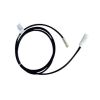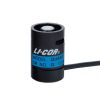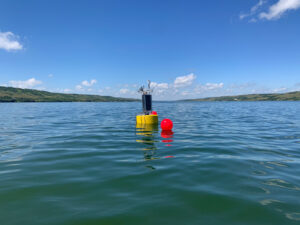LI-COR LI-192 Underwater PAR Sensor
Features
- Uses computer-tailored filter glass to achieve the desired quantum response
- Sensor is cosine corrected, and calibration is traceable to NIST
- Features corrosion-resistant, rugged construction for use in up to 560m depths
- Free ground shipping
- Expedited repair and warranty service
- Lifetime technical support
- More
Overview
The LI-192 Underwater Quantum Sensor measures PAR from all angles in one hemisphere. The LI-192 works in air or underwater at depths up to 560 meters. The measurements are cosine corrected and typically expressed as Photosynthetic Photon Flux Density (PPFD). For simultaneous measurements of downwelling and upwelling PAR, two sensors can be mounted on the 2009S Lowering Frame.
Measurement Principle
The LI-192 uses a silicon photodiode and a glass optical filter to create nearly uniform sensitivity to light between 400 and 700 nm, which closely corresponds to light used by most terrestrial and aquatic plants and algae. A precision optical filter blocks light with wavelengths beyond 700 nm, which is critical for measurements in a water column, where the ratio of infrared to visible light may be high.
- Absolute Calibration: +/-5% in air traceable to NBS
- Sensitivity: Typically 4 uA per 1000 umol s-1 m-2 in water
- Linearity: Maximum deviation of 1% up to 10,000 μmol s-1 m-2
- Stability:< +/-2% change over a 1 year period
- Response Time: 10 us
- Temperature Dependence: +/-0.15% per C maximum
- Cosine Correction: Optimized for both underwater and atmospheric use
- Azimuth:< +/-1% error over 360 degrees at 45 degree elevation
- Detector: High stability silicon photovoltaic detector (blue enhanced)
- Sensor Housing: Corrosion resistant metal with acrylic diffuser for both saltwater and freshwater applications
- Waterproof: Withstands 800 psi pressure (560 meter depths)
- Size: 3.18cm Dia. x 4.62cm H
- Weight: 227g
- Mounting: (3) 6-32 holes are tapped into the base for use with the 2009S Lowering Frame or other mounting devices
- Cable: Requires 2222UWB Underwater Cable
In The News
Regional Lake Monitoring in Maine: Community Funded Research and Protection
Lakes everywhere are threatened by climate change, harmful algal blooms , invasive species, and other environmental stressors. Local, regional, and federal agencies have stepped up in order to defend the environment and water resources. The Lakes Environmental Association (LEA) in Maine is one example of an organization dedicated to protecting local freshwater resources. Dr. Ben Peierls, LEA Research Director, explains the history of the nonprofit, "For more than 50 years, [LEA] has been working locally, statewide, and regionally, helping or interacting with people on lake water quality, watershed protection, conservation, education, invasive species, and other issues.
Read MoreCombating Water Insecurity in Saskatchewan with Real-Time Data
The prairies of Saskatchewan can be described as one of the least water-secure parts of Canada, making water quality monitoring essential for informed resource management in a region already facing water insecurity. While natural physical properties worsen some of the poor water quality conditions in the region, others are connected to land use. Having grown up spending summers on the shores of Lake Huron, Helen Baulch, an associate professor at the School of Environment and Sustainability at the University of Saskatchewan , has always been dedicated to the protection of water resources. Looking back fondly at her childhood playing along the shore, Baulch also recalls the invasion of quagga mussels during her teenage years and watching the lake change as a result.
Read MoreThin Ice: Year-Long Monitoring in Missouri Reservoirs
The value of multi-lake studies is well understood by international organizations like the Global Lake Ecological Observatory Network (GLEON) and the scientists who work tirelessly to provide data to the larger network. Rebecca North, an associate professor at the University of Missouri-Columbia , is one of many researchers involved in multi-lake research initiatives and conducting research locally in her home state. Having been born and raised on the shore of Lake Ontario, North grew up in a community that revolved around water. She also saw firsthand one of the worst water quality bodies of the world, the Bay of Quinte, decline throughout her lifetime.
Read More



























